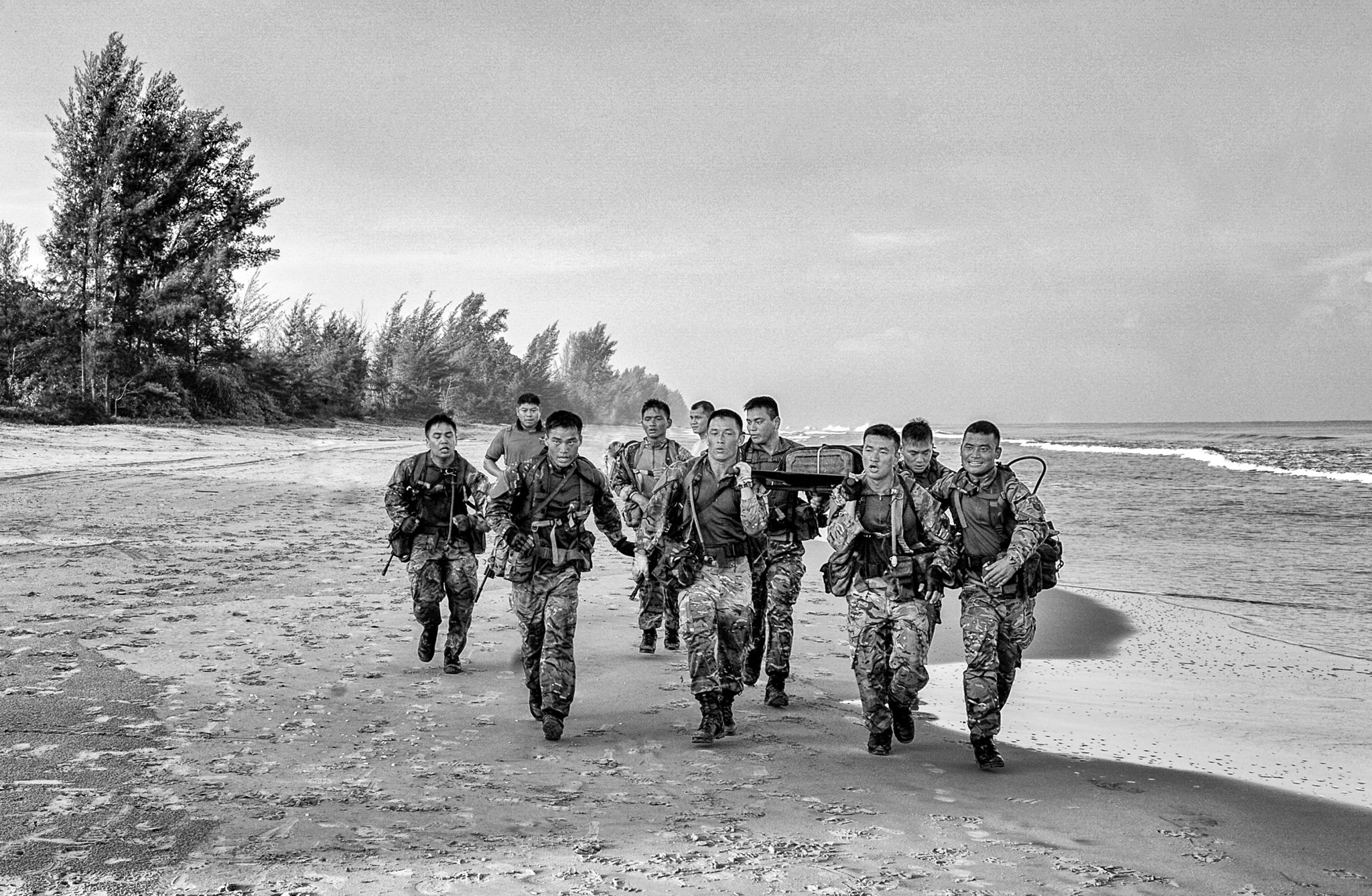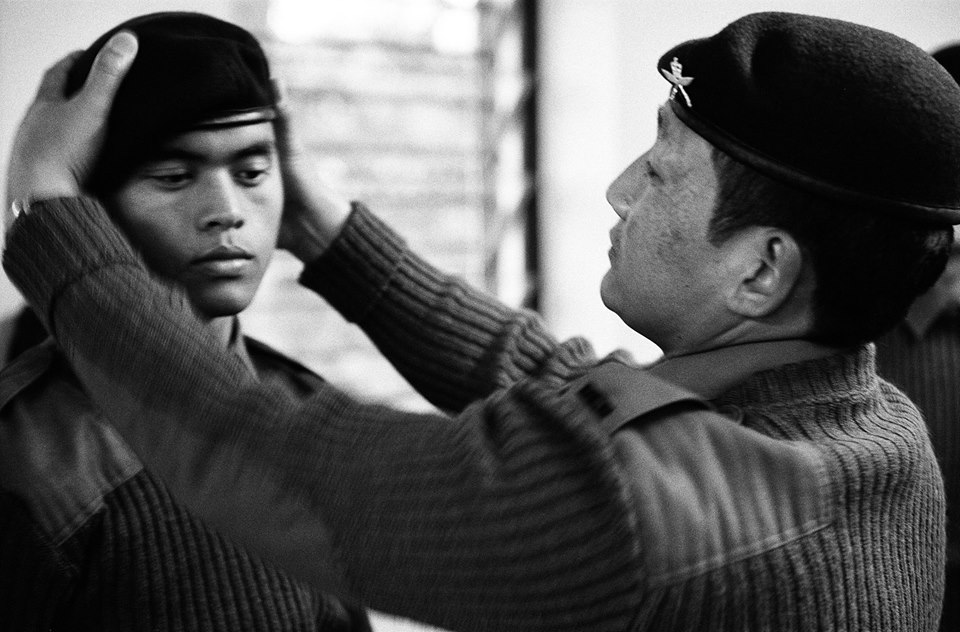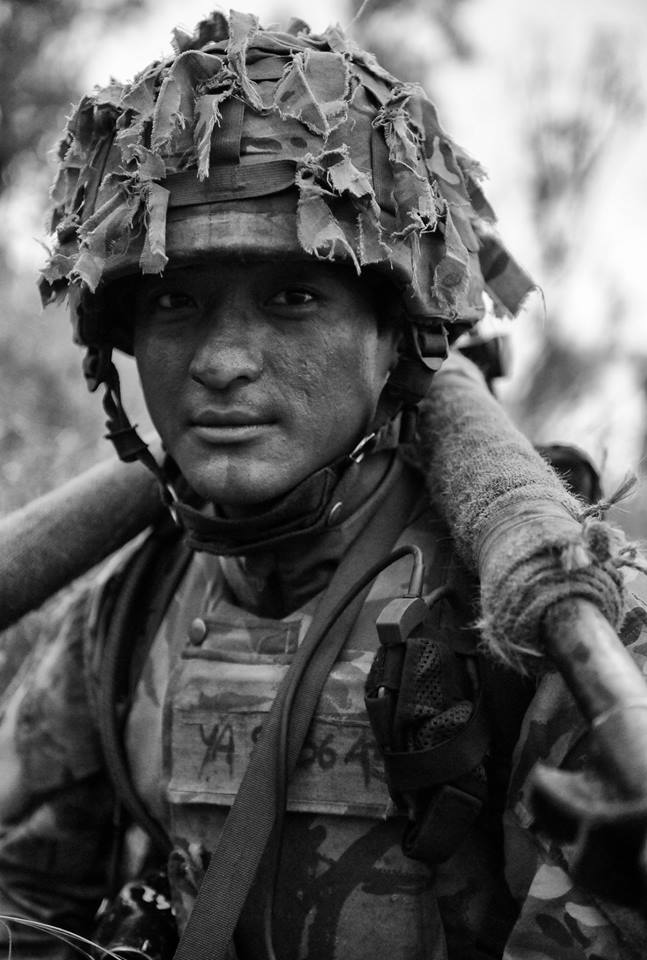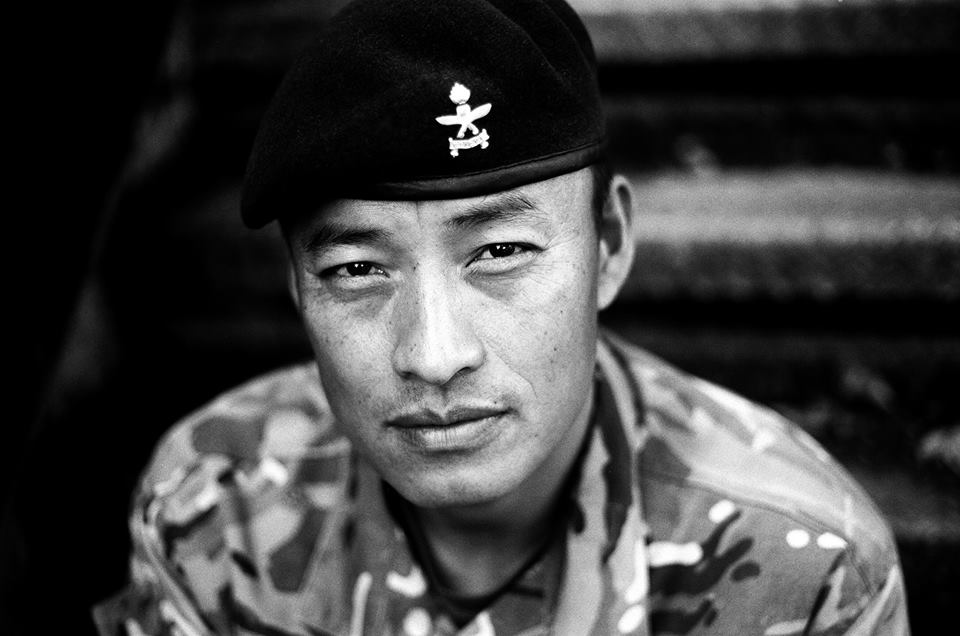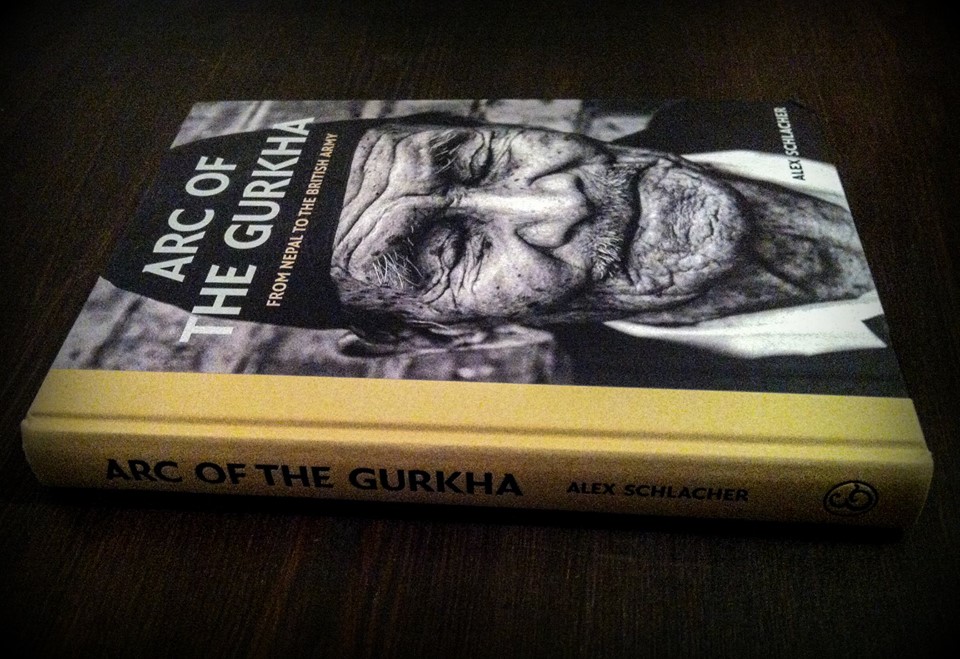Get the weekly SPARTANAT newsletter.
Your bonus: the free E-Book from SPARTANAT.
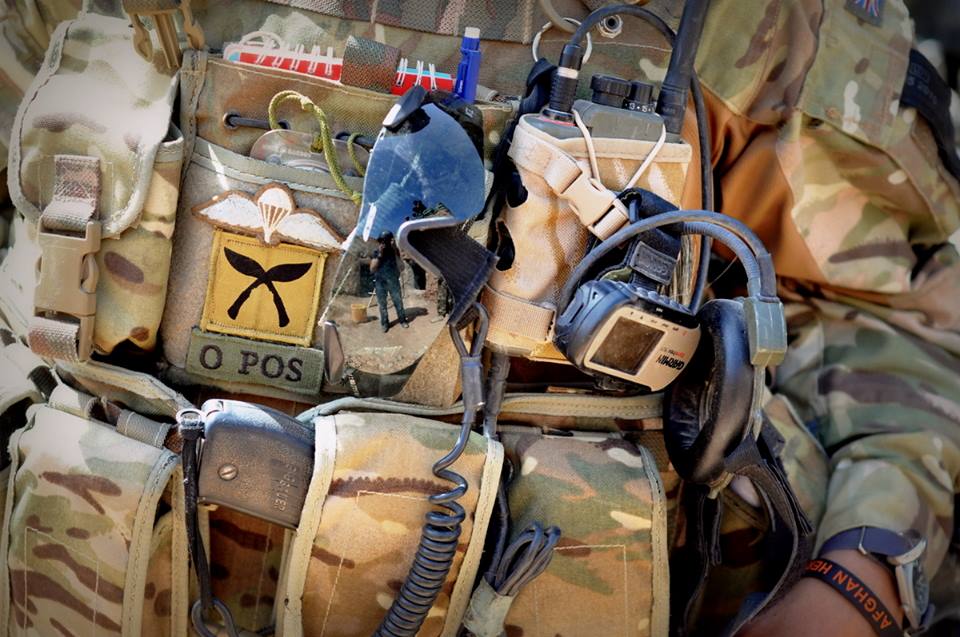
Among Gurkhas
Modern British equipment, deployed worldwide, yet with a rich history: the patch with two crossed Kukris – traditional Nepalese daggers – shows that it's worn by a Gurkha. Since 1815, Nepalese soldiers have served in a unit of the British Army. In December 2014, the book that is the ultimate portrait of the Gurkhas was released. The definitive work for the 200th anniversary of the Gurkhas surprisingly comes from a camera of a young Austrian photographer – by the way, you can see her reflected in the Gurkha's gear. We met Alex Schlacher for an interview and wanted to know the story behind her great book.
SPARTANAT: You are a photographer, you are a woman, and you come from Austria. How did you become interested in the topic of British Gurkhas?
Alex Schlacher: In 2009, I started a project about American police and traveled around the Southern and Midwestern United States with various departments (Homicide, CSI, SWAT, Patrol, Highway Patrol, Sheriff's Departments, Narcotics, Canine Units, Prisons, etc). I stayed in touch with some police officers I met. One of them, now the police chief of a police department in Georgia, was a US Marine Colonel in the Reserve and was deployed to Afghanistan to train the local police. I became curious and joined his unit of US Marines in Helmand Province, South Afghanistan in the summer of 2011. There, by chance, I met soldiers and officers of the Royal Gurkha Rifles (one of the two infantry battalions of the Gurkhas) who spontaneously invited me to accompany them.
And the Gurkhas really embraced me like a family member, immediately captivating me with their dignity, warmth, and stories of wars and their homeland in Nepal, so I quickly decided to make a project about them.
 SPARTANAT: It's evident from your book that the topic is more than just a "job" for you. How long did you accompany the Gurkhas, and where did you go?
SPARTANAT: It's evident from your book that the topic is more than just a "job" for you. How long did you accompany the Gurkhas, and where did you go?
Alex Schlacher: After traveling with the Gurkhas in Afghanistan, I visited all regiments of the Brigade of Gurkhas and participated in exercises and daily life in the barracks with most of them. I attended the regional selection in Dharan, East Nepal, the final central selection in Pokhara, West Nepal, and visited retired Gurkhas in Kathmandu and Kaski. I photographed and interviewed war-wounded veterans, attended basic training, went to Brunei twice in the jungle, one of which was a multi-week tactical exercise, participated in exercises in Australia and Kenya, and many smaller ones with the other regiments in England, Scotland, and Wales, such as a multi-day night exercise with the Queen's Gurkha Engineers knee-deep in mud in the pouring rain in Southern England. This book took almost exactly three years from the first meeting to the first proof copy, which now sits on my desk.
 SPARTANAT: It’s a men’s world. What was it like for you as a woman to be with the Gurkhas?
SPARTANAT: It’s a men’s world. What was it like for you as a woman to be with the Gurkhas?
Alex Schlacher: It was not a problem at all. On the one hand, I practically grew up in barracks because of my father's profession, so the environment is completely normal for me. On the other hand, while Nepalese culture is quite conservative, and women generally have very traditional roles to play, if someone doesn't fit their worldview, the Gurkhas react not with rejection but with curiosity and many questions. They accept that there are other cultures and do not judge. Instead, there's a lot of banter. During long exercises and deployments, one might be eyed skeptically for a short time, but as soon as they see that you can pitch in, don’t complain, and can carry your own gear, you are quickly treated as an equal.
I was wonderfully integrated into the community, so there was a lot of support for my project.
```htmlSPARTANAT: What fascinated you the most? And were there also experiences that repulsed you?
Alex Schlacher: What fascinated me the most was the total contrast between the toughness, endurance, and spectacular fighting instinct of the Gurkhas and their simultaneous gentleness, generosity, and warmth. I wasn't repulsed by anything about the Gurkhas themselves, but of course, Afghanistan was a very unique experience. There were some things there that kept me up at night.
SPARTANAT: In the end of this story: How is your relationship with the Gurkhas?
Alex Schlacher: Very good. I am a bit acquainted with many Gurkhas and have close friendships with a handful of them. I was accommodated with relatives of Gurkha friends in Nepal, met some of the families. We stay in touch, mainly through Facebook. I also care a lot about the young soldiers from 2013 and 2014, as I accompanied them through recruitment in Nepal until the end of basic training. They often send me photos of their progress, their entry into different regiments and passing exams. I feel a little bit of motherly pride.
 ALEX SCHLACHER (Image Center) was born in Vienna (Austria), grew up in Styria, started taking photos at the age of four, but only decided to make photography a full-time profession 20 years after leaving school, during which she traveled the world and searched for the meaning of life. She stumbled into military and police photography by chance and has since photographed the American police, Gurkhas, and US Marines, as well as the Afghan National Police, the Afghan Army, and the Austrian Cobra.
ALEX SCHLACHER (Image Center) was born in Vienna (Austria), grew up in Styria, started taking photos at the age of four, but only decided to make photography a full-time profession 20 years after leaving school, during which she traveled the world and searched for the meaning of life. She stumbled into military and police photography by chance and has since photographed the American police, Gurkhas, and US Marines, as well as the Afghan National Police, the Afghan Army, and the Austrian Cobra.
“Arc of the Gurkha“ by Alex Schlacher, 288 pages, published by Elliott and Tompson Verlag, costs Euro 35.29. The book will be released on December 4. The book is mostly black and white photography. In the gallery, we can show you some of the great pictures.
SPARTANAT is the online magazine for Military News, Tactical Life, Gear & Reviews.
Send us your news: [email protected]
Ad
similar
Get the weekly SPARTANAT newsletter.
Your bonus: the free E-Book from SPARTANAT.




